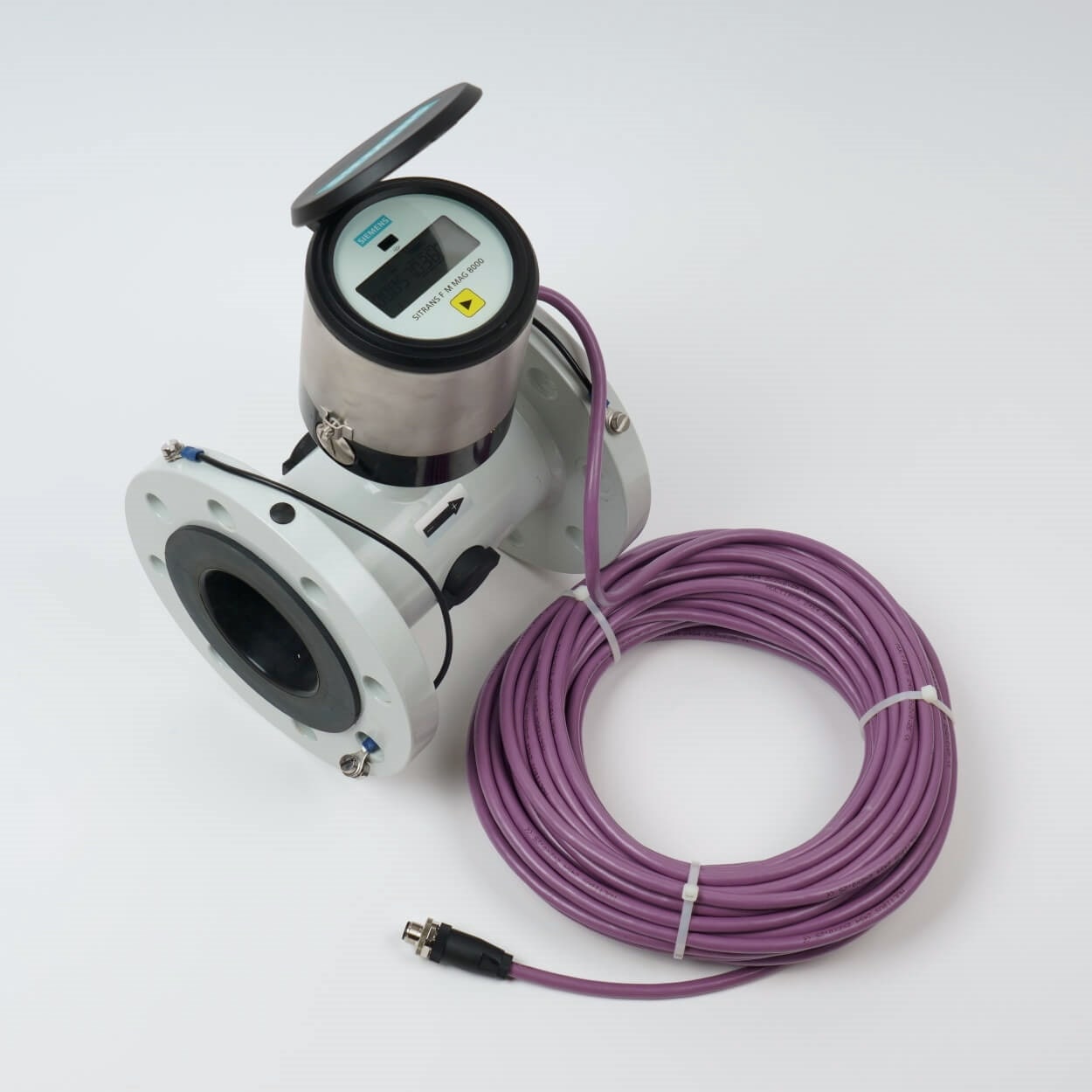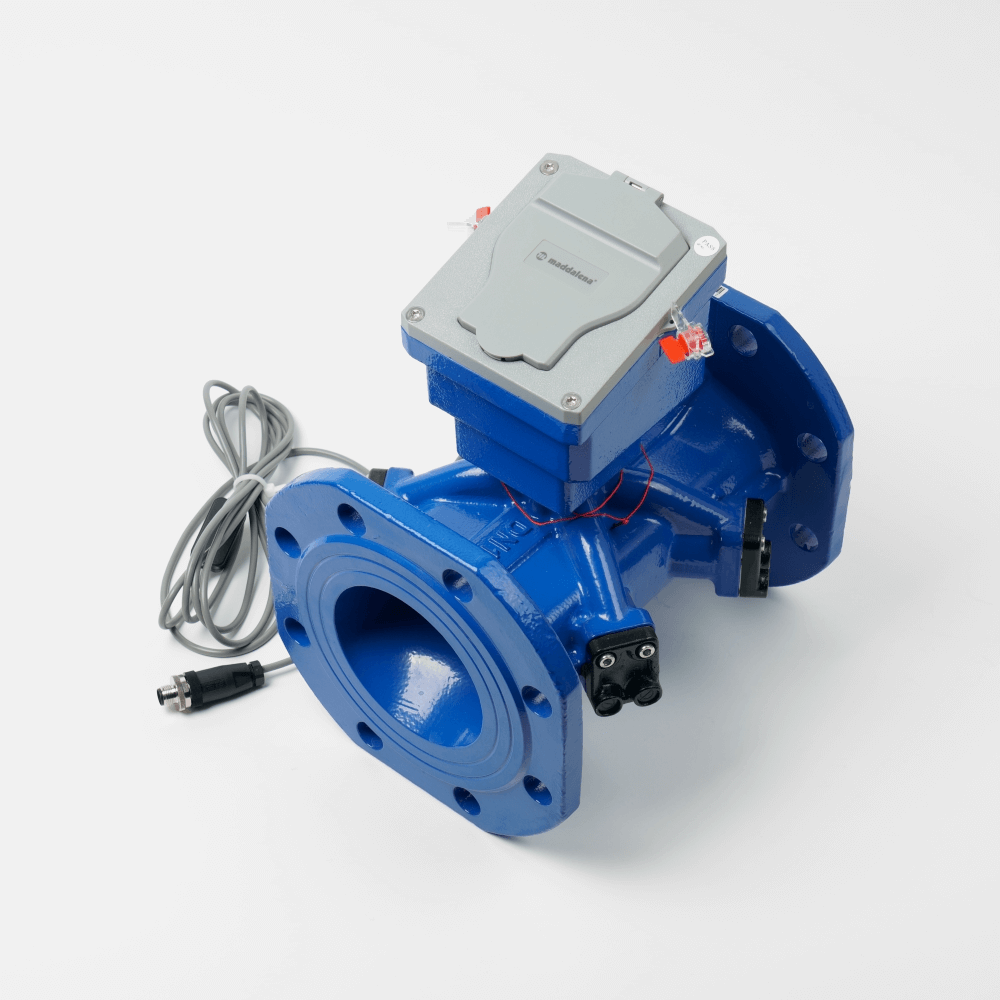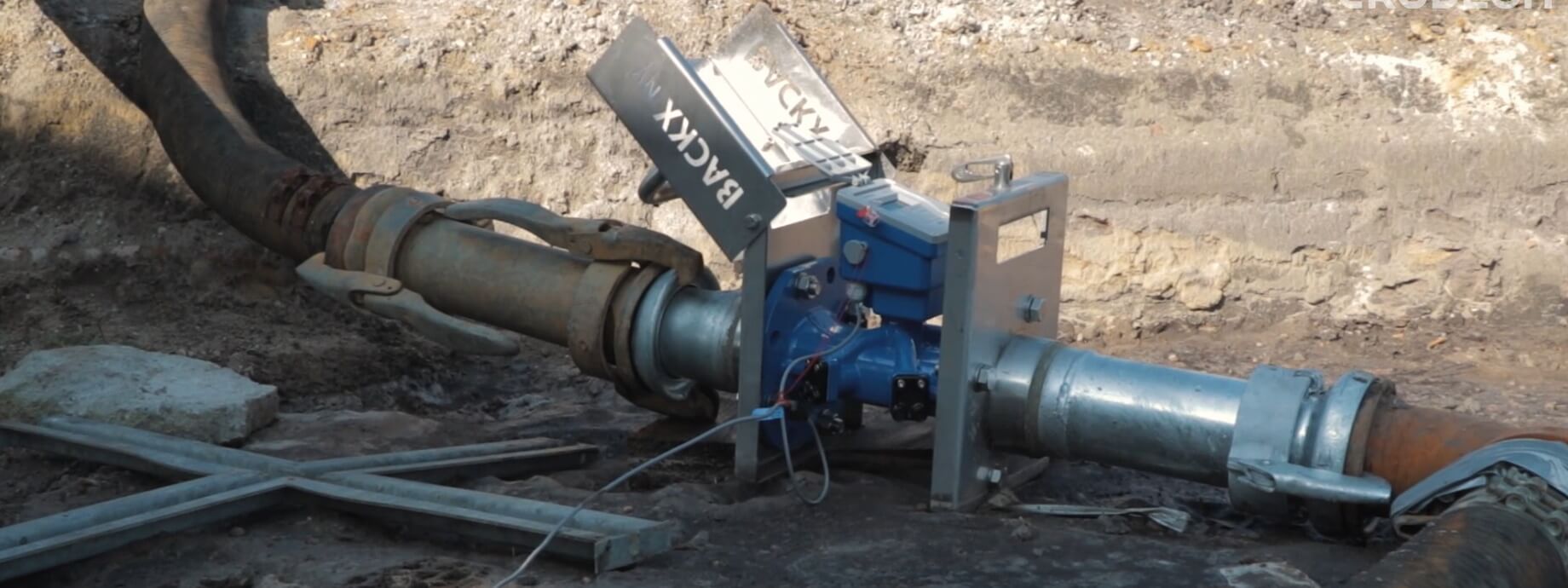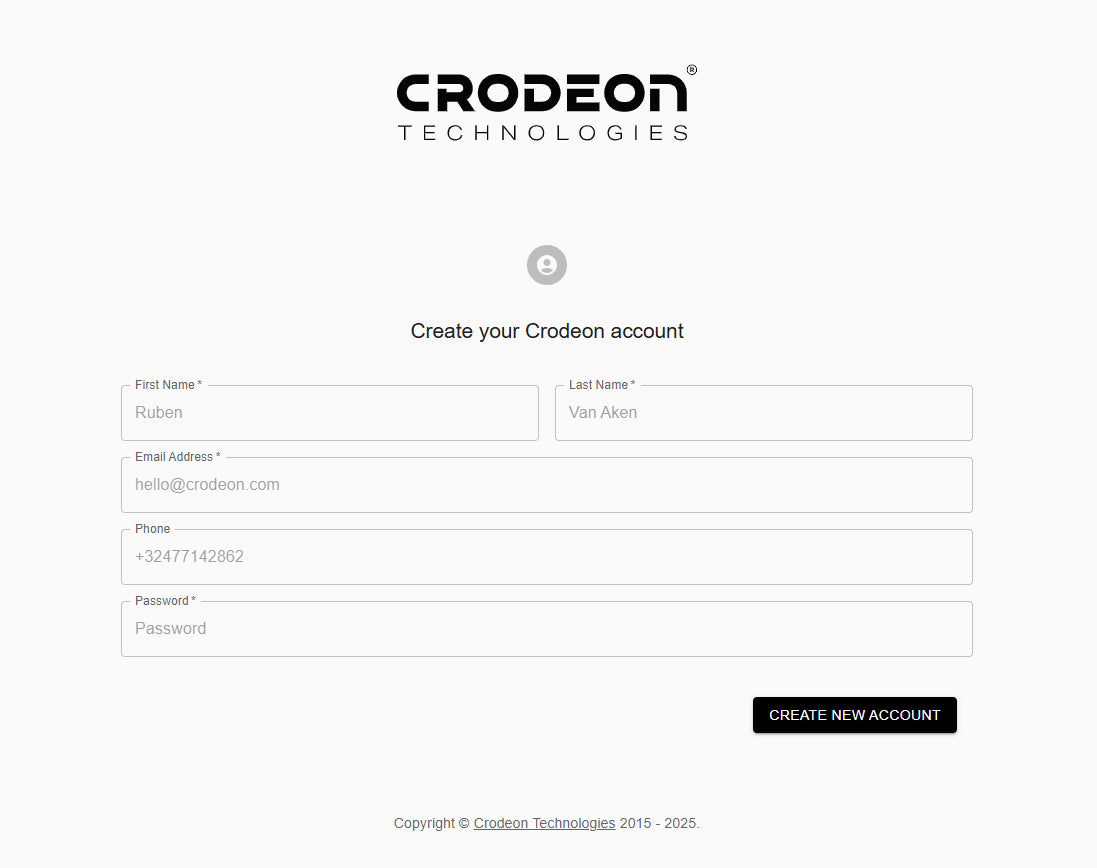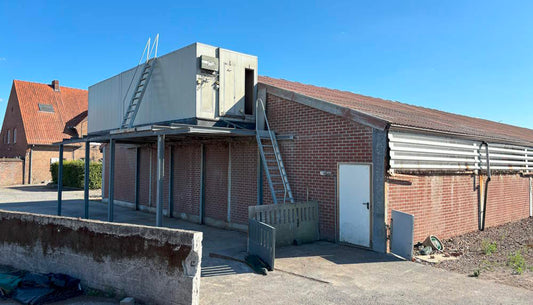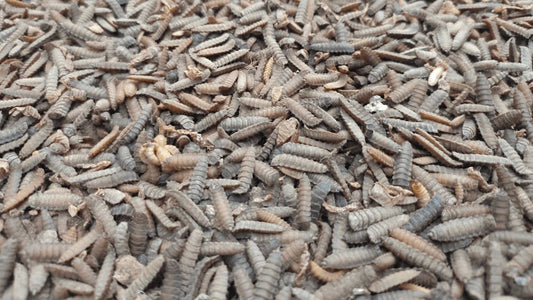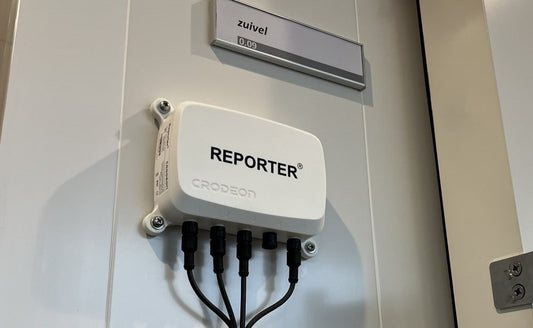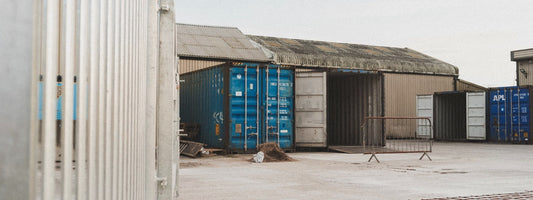Quelle est la différence entre un débitmètre à ultrason et un débitmètre électromagnétique ?
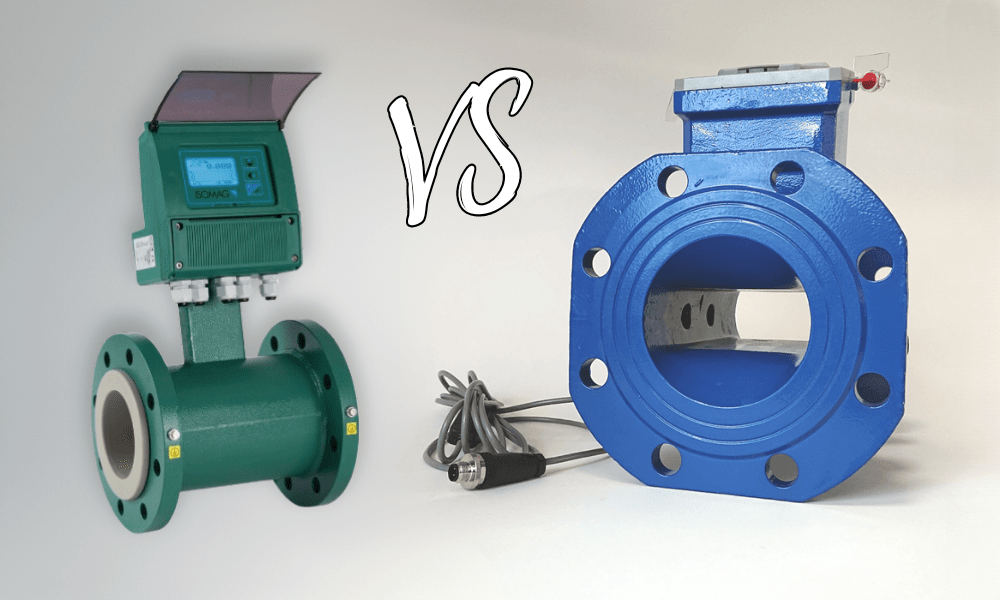
Si vous souhaitez mesurer le débit d'un liquide, vous vous mettez à la recherche d'un débitmètre. Mais les choses peuvent rapidement se compliquer lorsqu'on les examine de plus près. Il existe plusieurs types de débitmètres et ils ne sont pas tous interchangeables. Quelle est la différence entre un débitmètre à ultrason et un débitmètre électromagnétique ? Nous discutons des différences ci-dessous.
Qu'est-ce qu'un débitmètre électromagnétique ?
Les débitmètres électromagnétiques ne fonctionnent que lorsque la substance qu'ils mesurent est conductrice (liquides, comme l'eau). Ils fonctionnent selon la loi d'induction de Faraday. Le débitmètre crée un champ magnétique. Le liquide qui traverse le compteur contient des ions positifs et négatifs. Le champ magnétique séparera ces ions + et -, provoquant l'apparition d'une différence de tension dans le liquide. Plus le liquide s'écoule rapidement, plus la quantité d'électricité (tension) générée sera importante.
Les débitmètres électromagnétiques sont généralement utilisés dans les installations destinées à mesurer l'eau ou les liquides (chimiques) à base d'eau.
Ce qui fonctionne : eau potable, eau de pluie, eaux de la nappe phréatique, solutions à base d'eau, acides, solutions alcalines et autres.
Ce qui ne marche pas : l'eau distillée (car non conductrice), les huiles fossiles (hydrocarbures) et les gaz.

La plus grande différence entre un débitmètre électromagnétique et un débitmètre ultrasonique réside probablement dans le fait que les débitmètres électromagnétiques fonctionnent uniquement sur des liquides conducteurs, alors que les débitmètres à ultrasons n'ont pas cette restriction.
Les débitmètres électromagnétiques présentent de gros avantages, mais ils n'obstruent pas le débit qu'ils mesurent. Cela signifie que même les liquides à haute viscosité peuvent être mesurés, même la vase, la boue ou le fumier liquide, qui peuvent contenir des morceaux solides. De plus, ces débitmètres peuvent résister à des températures et des pressions élevées.
Qu'est-ce qu'un débitmètre à ultrason ?
Un débitmètre à ultrason est un autre type de débitmètre non obstruant qui peut mesurer des liquides à viscosité limitée. Il mesure toutefois le débit d'une autre manière que le débitmètre électromagnétique. Le débitmètre ultrason fonctionne en envoyant des impulsions ultrasoniques (sonores). Le compteur contient au moins 2 émetteurs-récepteurs sonores. La vitesse du milieu mesuré est déterminée par la différence du temps de transit pendant lequel l'impulsion se déplace entre les émetteurs et les récepteurs.
Ce qui fonctionne : les liquides fluides (sans solides), les gaz et les huiles fossiles (hydrocarbures).
Ce qui ne marche pas : les débitmètres à ultrasons sont sensibles aux solides (plus de 5 à 10 %) et aux bulles.

La plus grande différence entre un débitmètre à ultrason et un débitmètre électromagnétique est que le débitmètre à ultrason ne nécessitent pas de liquide conducteur pour fonctionner. Il mesure également les gaz, mais s'en sort moins bien avec les liquides contenant de nombreux solides ou bulles. Les débitmètres à ultrasons peuvent résister à des températures et à des pressions élevées, en plus de résister aux liquides agressifs (dans le cas des débitmètres à ultrasons à pince).
Quelle est la différence entre un débitmètre électromagnétique et un débitmètre ultrasonique ?
La plus grande différence entre un débitmètre à ultrason et un débitmètre électromagnétique réside dans la manière dont ils mesurent (et par conséquent ce qu'ils peuvent mesurer). L'électromagnétisme fonctionne sur la base de la conductivité d'un liquide et le débit est mesuré sur la base de l'électricité. Les ultrasons fonctionnent sur la base d'impulsions sonores et mesurent le temps entre l'émission et la réception d'une impulsion. Les débitmètres à ultrason peuvent mesurer les gaz, les liquides et les vapeurs, tandis que les débitmètres électromagnétiques fonctionnent uniquement sur les liquides (conducteurs).
Enfin, il convient de noter que les débitmètres électromagnétiques sont souvent moins chers que les débitmètres à ultrasons.
|
Peut mesurer
|
Débitmètre électromagnétique
|
Débitmètre à ultrason
|
| Liquides non conducteurs | Non | Oui |
| Liquides contenant plus de 10 % de solides ou de bulles | Oui | Non |
| Haute pression | Oui | Oui |
| Températures élevées ou basses | Oui | Oui |
| États | Liquides | Gaz, liquides, vapeurs |
Le meilleur choix pour votre projet
Il existe quelques différences mineures entre les débitmètres électromagnétiques et les débitmètres ultrasoniques. En fonction de votre situation, vous devrez choisir le débitmètre qui vous convient le mieux.
Découvrez-en davantage sur nos solutions solutions d'eau connectées.

